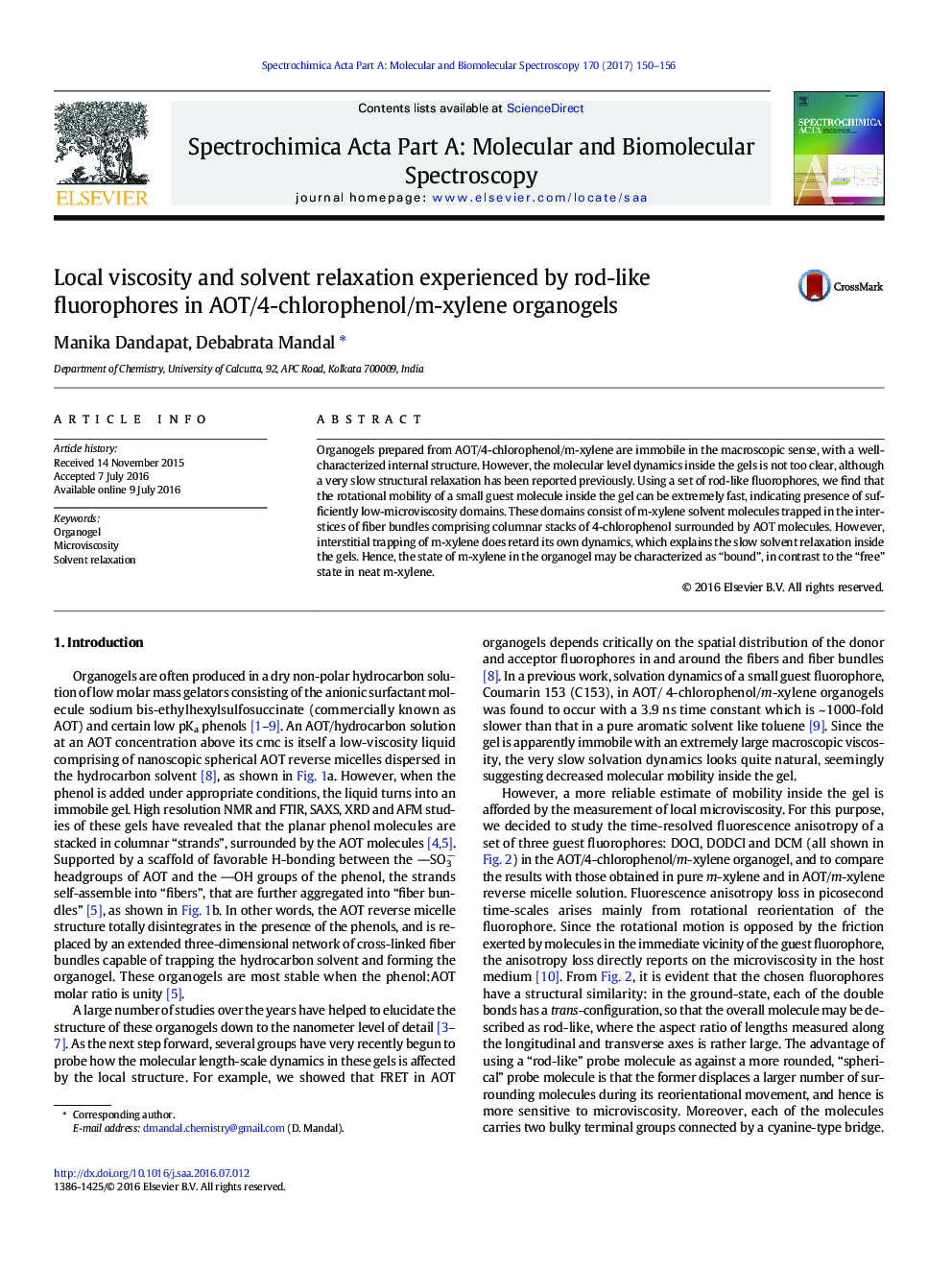| Article ID | Journal | Published Year | Pages | File Type |
|---|---|---|---|---|
| 1230802 | Spectrochimica Acta Part A: Molecular and Biomolecular Spectroscopy | 2017 | 7 Pages |
•AOT-based organogels consist of rigid fiber bundles with solvent trapped in interstices.•Rotational mobility of rod-like fluorophores inside the gels is extremely fast.•Hence low-microviscosity interstitial solvent domains exist far from the rigid fibers.•Solvent relaxation in these interstitial solvent domains is slower than that in neat solvent.•Solvent trapped in interstitial domains may be described to be in a dynamically “bound” state.
Organogels prepared from AOT/4-chlorophenol/m-xylene are immobile in the macroscopic sense, with a well-characterized internal structure. However, the molecular level dynamics inside the gels is not too clear, although a very slow structural relaxation has been reported previously. Using a set of rod-like fluorophores, we find that the rotational mobility of a small guest molecule inside the gel can be extremely fast, indicating presence of sufficiently low-microviscosity domains. These domains consist of m-xylene solvent molecules trapped in the interstices of fiber bundles comprising columnar stacks of 4-chlorophenol surrounded by AOT molecules. However, interstitial trapping of m-xylene does retard its own dynamics, which explains the slow solvent relaxation inside the gels. Hence, the state of m-xylene in the organogel may be characterized as “bound”, in contrast to the “free” state in neat m-xylene.
Graphical abstractFigure optionsDownload full-size imageDownload as PowerPoint slide
